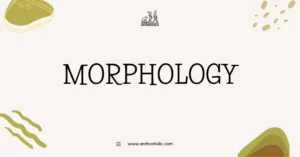AI Answer Evaluation Platform Live Now. Try Free Answer Evaluation Now
Fossils
Fossils are a gateway to a world long past, providing a tangible connection to the evolutionary history of life on Earth. They hold the key to understanding how life has evolved and how organisms interacted with their environments over time.

What are Fossils?
Fossils are the preserved remains or impressions of organisms from past geologic ages embedded in rocks. They represent a remarkable record of ancient life forms and environments, offering a glimpse into the past. Fossils can be categorized into two main types:
- Body Fossils: These are the physical remains of an organism, such as bones, shells, and teeth.
- Trace Fossils: These are the signs of an organism’s activity, like footprints, burrows, and coprolites (fossilized feces).
The Formation of Fossils
Fossil formation involves several steps, summarized below:
- Death of an organism in a suitable environment that promotes preservation.
- Rapid burial, usually by sediment.
- Over time, these sediments harden into rock, encasing the remains.
- Gradual replacement of organic material by minerals.
- Erosion or other geological processes expose the fossil.
The chances of an organism becoming fossilized are slim as the conditions need to be just right. This makes each fossil a valuable piece of Earth’s puzzle.
The Importance of Fossils
Fossils are more than just a fascinating curiosity. They have scientific significance that includes:
- Evolutionary Studies: Fossils provide evidence of how species have evolved over time.
- Climate Change Studies: Ancient plant fossils, called paleobotany, provide information about past climates and environments.
- Plate Tectonics: Fossils can be used to support the theory of continental drift.
| Application | Description |
|---|---|
| Evolutionary Studies | Evidence of species adaptation, development, and extinction |
| Climate Change Studies | Understanding of historic climate patterns, atmospheric composition |
| Plate Tectonics | Support for continental drift theory |
Famous Fossils
Some fossils have gained fame due to their exceptional preservation, age, or the insights they provide. Here are a few:
- Archaeopteryx: An important link between dinosaurs and birds, showing features of both.
- Lucy (Australopithecus afarensis): One of the earliest known hominids, offering insights into human evolution.
- Tyrannosaurus Rex: Perhaps the most famous of all dinosaur fossils, the T-Rex epitomizes the power and majesty of ancient life.
Fossil Locales
Fossils can be found all around the world, but some locations are particularly fossil-rich, such as:
- Morrison Formation, USA: Known for its Late Jurassic dinosaur fossils.
- Burgess Shale, Canada: Renowned for its exquisite soft-bodied animal fossils.
- Chengjiang, China: Famous for its Early Cambrian explosion fossils.
The Field of Paleontology
Paleontology is the scientific study of the life of past geologic periods as known from fossil remains. Paleontologists study a variety of fossils, from ancient bacteria to dinosaur bones, seeking to understand the past and predict future biodiversity trends.
Fossilization Processes
The process by which a once-living organism becomes a fossil is known as fossilization. There are four primary methods:
- Permineralization: Minerals carried by water fill in the spaces within organic tissues, producing a fossil.
- Molds and Casts: When an organism decomposes, it may leave a hole or impression in the sediment, creating a mold. If the mold is filled with other minerals, it forms a cast.
- Carbonization: When an organism dies and is compressed over time, all elements except carbon are driven off, creating a dark silhouette of the organism.
- Unaltered Preservation: In rare instances, the original material of the organism remains unchanged. This can occur in places such as the La Brea Tar Pits or in amber.
Interpreting Fossil Records
Understanding the fossil record is not without its challenges. The fossil record is inherently incomplete and biased in several ways:
- Temporal Bias: Older fossils are less likely to be found due to geological processes.
- Taxonomic Bias: Some organisms, like hard-shelled animals, are more likely to fossilize than soft-bodied ones.
- Habitat Bias: Organisms living in areas more conducive to fossilization (e.g., near water bodies) are more often preserved.
| Bias | Description |
|---|---|
| Temporal | Geological processes make older fossils less likely to be found |
| Taxonomic | Hard-shelled organisms are more likely to fossilize than soft-bodied ones |
| Habitat | Organisms in certain locations (e.g., near water bodies) are more likely to become fossils |
Despite these challenges, fossils remain our best tool for understanding the history of life on Earth.
Fossils and Human History
Fossils have significantly influenced our understanding of human evolution. Notable hominid fossils include:
- “Lucy”: This Australopithecus afarensis, discovered in Ethiopia in 1974, was a crucial step in understanding human evolution.
- “Taung Child”: This Australopithecus africanus, found in South Africa in 1924, demonstrated that human evolution began in Africa.
- “Peking Man”: This Homo erectus, discovered in China in the 1920s, offered insights into early human lifestyles.
Conclusion
From the depths of ancient oceans to the remnants of primordial forests, fossils provide a direct connection to the past like no other artifact. They allow us to explore, understand, and appreciate the vast tapestry of life that has adorned our planet. Through the dedicated work of scientists worldwide, these remarkable records of life continue to illuminate our understanding of our world and our place within it.
FAQs about Fossils
References
- Prothero, D. (2007). Evolution: What the Fossils Say and Why It Matters. Columbia University Press.
- Benton, M. (2005). Vertebrate Paleontology. Wiley-Blackwell.
- Martill, D., Bechly, G., & Loveridge, R. (2007). The Crato Fossil Beds of Brazil: Window into an Ancient World. Cambridge University Press. https://www.researchgate.net/publication/297874973_The_Crato_Fossil_Beds_of_Brazil_Window_into_an_Ancient_World
- Briggs, D., & Crowther, P. (2001). Palaeobiology: A Synthesis. Wiley-Blackwell.
- Tudge, C. (2000). The Time Before History: 5 Million Years of Human Impact. Touchstone.
- Johanson, D., & Edgar, B. (2006). From Lucy to Language: Revised, Updated, and Expanded. Simon & Schuster.
- Zhang, Y., & Jia, L. (1985). Palaeoanthropology and Palaeolithic Archaeology in the People’s Republic of China. Academic Press. https://www.jstor.org/stable/42929173
- Prothero, D. (2013). Bringing Fossils to Life: An Introduction to Paleobiology. Columbia University Press.



